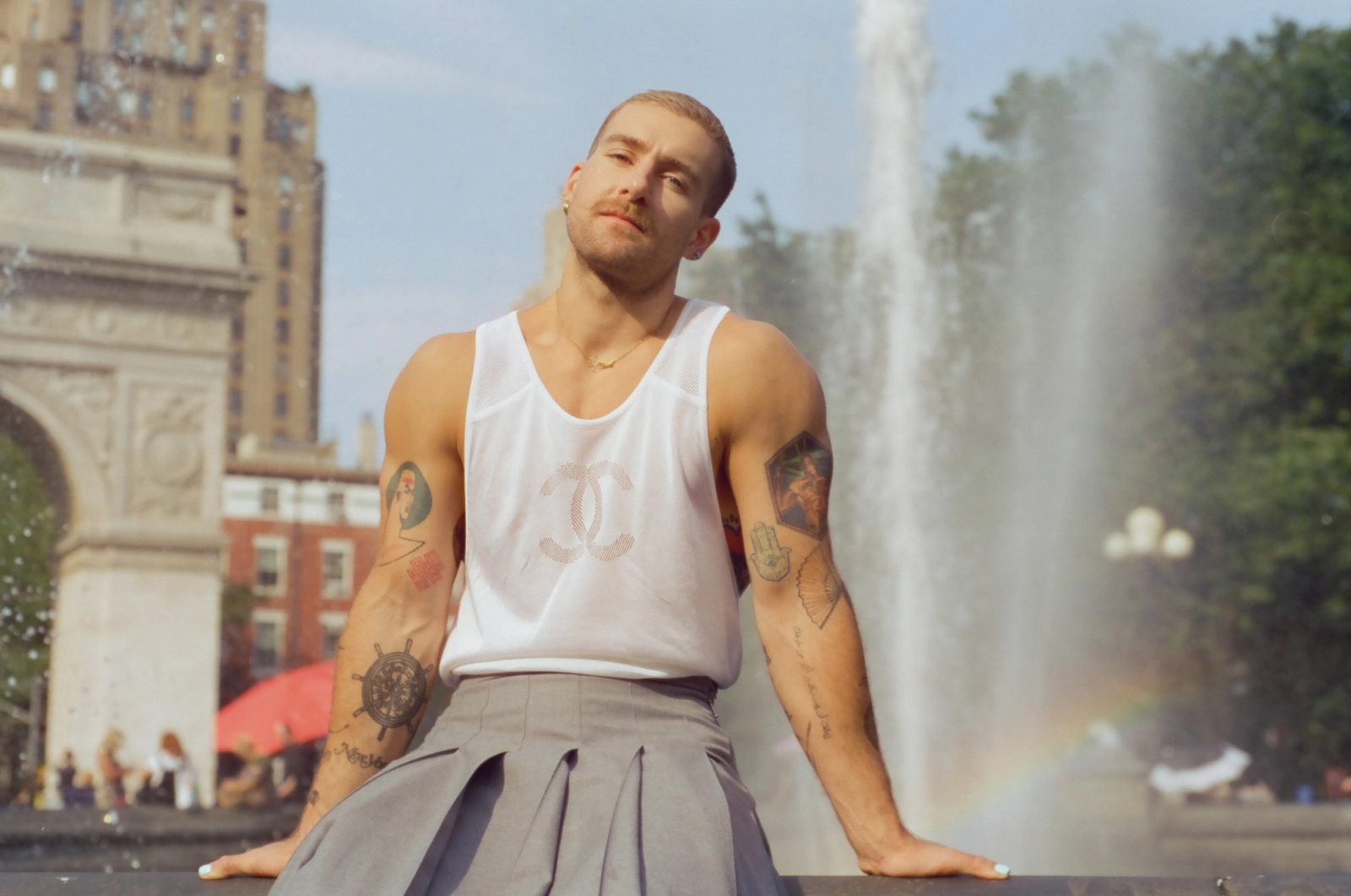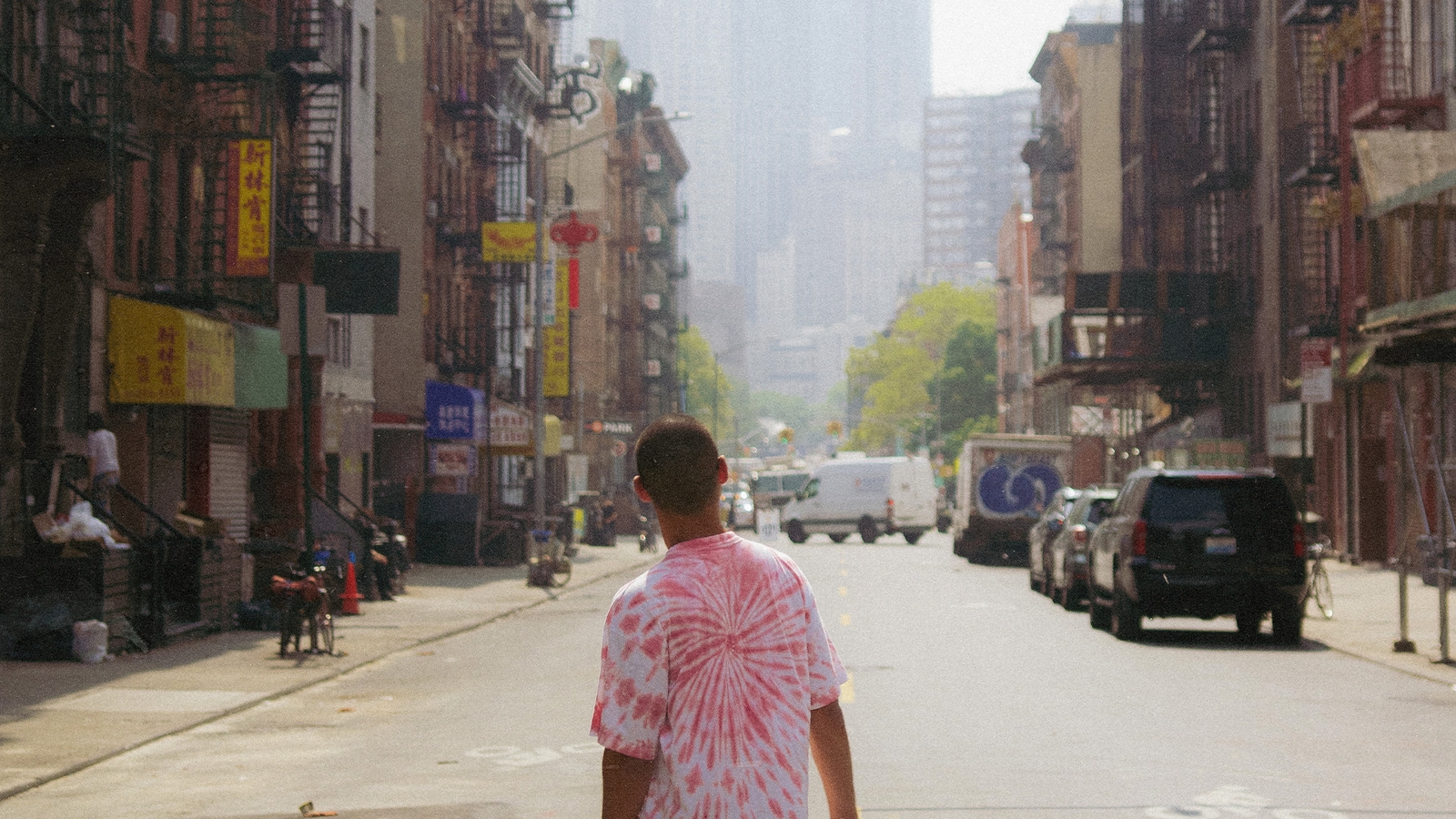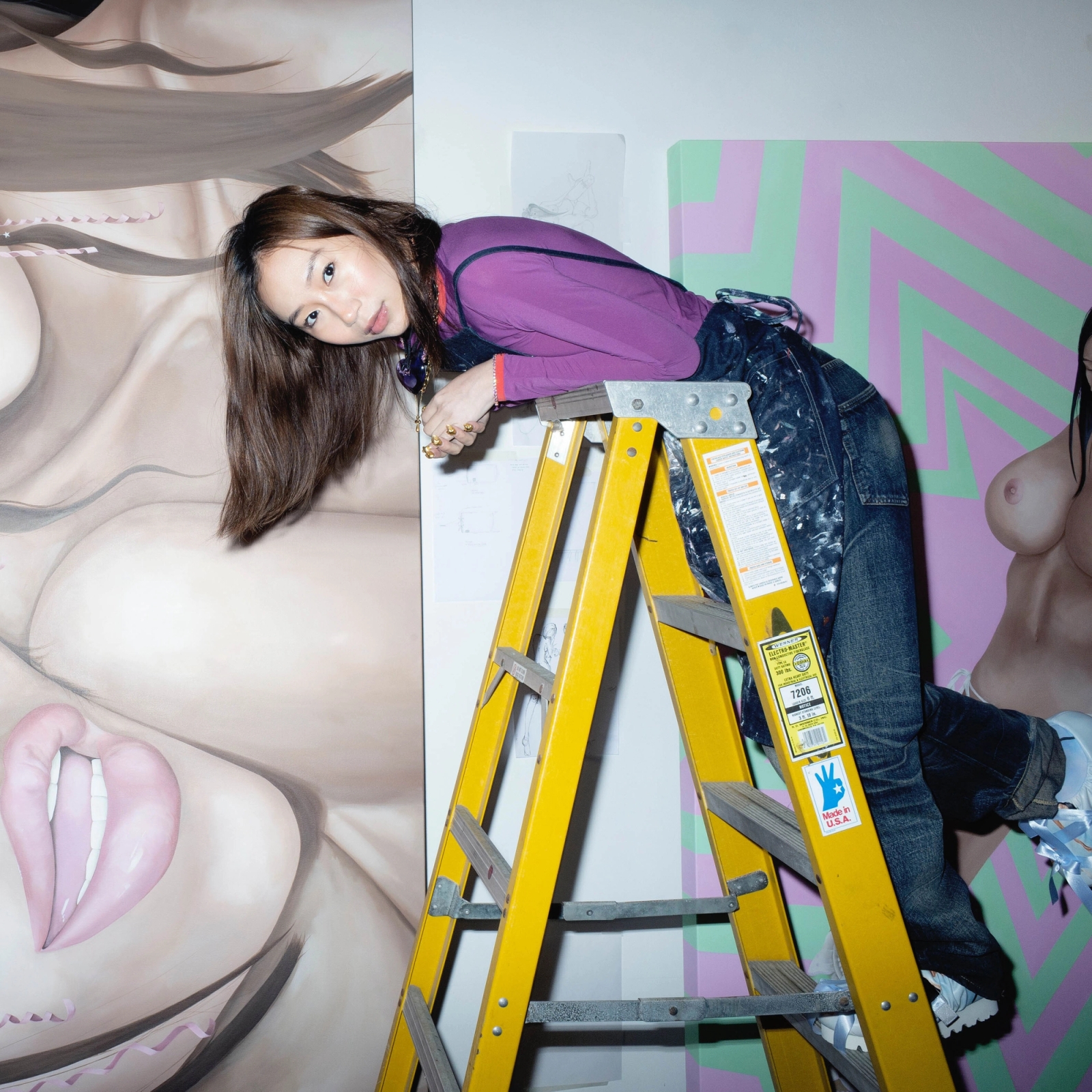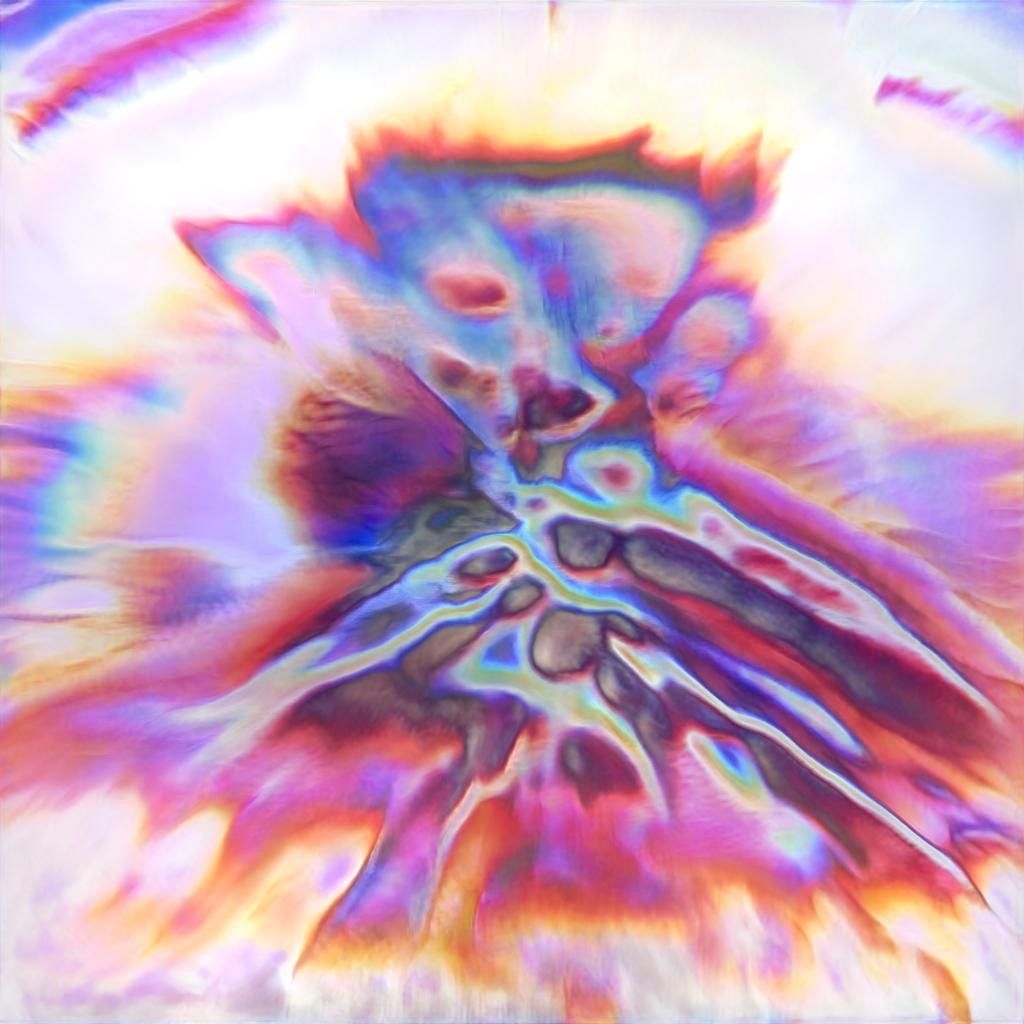MATTE, as part of its collaboration of the inaugural TONO video and performance art festival in Mexico City, sat down with its Founder, Curator, and Artistic Director, Sam Ozer.
MATTE: Sam, hi! Thanks for welcoming us to TONO. What brings all these works, from different artists, backgrounds, and media, together? What are the themes they share? What I noticed first is some hope, and joy, despite disaster.
OZER: I think that's spot on. The works generally are brought together by a sense of rhythm and use music, movement and physicality in a variety of ways to act as a form of resistance, of celebration, of communication, etc. In some instances there are active calls for revolution through music, especially with Santiago Gómez’s video that looks at the history of reggaeton, and others artists work to reimagine a different future built around joy and possibility, such as in Jacolby Satterwhite’s work. Sound is the central component that ties these works together, moves the piece along, and acts as a nexus for gathering people together.
I have no training in music whatsoever. I formally know nothing about music. But I love dancing, and I love music, and I love working with artists that work with it because I just think it's so visceral. It either hits and it hits you, or it doesn't. Physically, you feel it in your body and it touches you. And I think with a lot of the videos, at least for me, you want to be in the room with them. And even if they are exploring a difficult subject matter—ecological disaster, faith, politics, etc.--they use music as a way to pull you in.
MATTE: You mentioned to me that a theme guiding TONO is ‘Rhythm.’
OZER: Rhythm is a way of keeping order. In music, it's the way of structuring a piece and in dance it informs choreography. So in what ways do artists use rhythm to maintain order or promote disorder? And then the relationship also to ecology. There's actual rhythms, of course, even with our own physical bodies, our heartbeats, how that aligns with rhythms within nature.
When some of these works are in situ in natural environments like Cecilia Bengolea in Jamaica, it makes us think about these relationships of, for example: water systems, or heat, like in Santiago Gómez's work, landscape, like in Paloma's [Contreras Lomas] or Garush's [Melkonyan]…
MATTE: Tell us about Synthetic Opus on Thursday night.
OZER: It’s a development of a work that Lotte [Andersen] made for a group exhibition that I organized last summer at David Kordansky Gallery. In that edition she worked with Alonso [Leon-Velarde]on the composition, who also worked on Synthetic Opus, in addition withNaima [Karlsson] and Max [Manzano an artist whose based in Tepoztlán, which is an hour south of Mexico City. In the original piece, Chaos has no Morality (2022) Lotte deconstructed the counting rhyme Ten Little Injuns, formerly Ten Little Indians and created a proposal for an anthem that drew on the violence and racism embedded in most children’s nursery rhymes, the history of national anthems, and the hypnotic quality of a musical hook. In Synthetic Opus, the group took this initial composition and expanded it out to imagine a further proposal for a deconstructed anthem, that diverged from the initial rhyme and more directly references existing national anthems in Mexico and Peru.
MATTE: What’s TONO’s origin story?
OZER: All of the video works were chosen because of the relationship to rhythm and music. Curatorially, I've always been interested in moving image that has really good sound, whether it's the score, whether it's sampling… Sound is often proof that allure does not need to be devoid of “seriousness,” a good sound can pull you in and keep you there while the work is discussing something much heavier. Two years ago I started doing a series of shows under the title of “Set to Go,” which takes its name from the video Faz Que Vai [Set to Go] (2015) by Bárbara Wagner and Benjamin de Burca, which was included in the first edition.
When I started working on TONO, I was like, I think I'm definitely not done dealing with these themes. Let me expand it to Rhythm as a guiding theme so I can talk about ecological issues. I can talk about issues relating to race, issues relating to violence and nationalism, etc., but all through this guiding structure of music, basically. I had worked with several artists in TONO before and for others I had been talking to for awhile and this finally was the time where we could work together. So it's definitely flowing from previous research.
MATTE: There are three nights of film screenings as well?
OZER: The film screenings are in collaboration with the National Museum of Modern Contemporary Art, Korea in Seoul (MMCA), the Peabody Essex Museum in Massachusetts (PEM), and the National Gallery of Victoria in Melbourne (NGV), as part of “Watch & Chill” season 3. As thematically this program looks at “suspense,” it has functioned as this incredible satellite project within TONO. During more of a peak pandemic time, Jihoi Lee, a curator at the MMCA had a brilliant idea to start this hybrid streaming platform in conjunction with in-person exhibitions, recognizing the importance that this is a great opportunity to share collections online, but most artists didn’t make their work to be viewed on a laptop.How do we make work accessible to a wider audience, but then also respect and actually show work in more physical format? So the first season was in collaboration with other museums in Asia, like M+ , the second season collaborated with the Sharjah Art Foundation, and then in the third season, it's the partners I just listed. As the theme is ‘Streaming Suspense,’the program looks at moments of tension, reconsidering our reality through moments of suspense. Some of those themes entirely cross-over with TONO and there are subsequently six TONO artists that are taking part in that program as well: Luiz Roque, Paloma Contreras Lomas, Jacolby Satterwhite, Garush Melkonyan, Meriem Bennani, and Naomi Rincón Gallardo.
MATTE: And TONO includes a number of live performances as well?
OZER: There’s the video installations, which we talked about, this one sound piece that we have, these evening screenings, which is more like a cinema program, and we have the performances. We just had this amazing performance with Jao Moon. The opening was with Osías Yanov. Next week is Diego Vega Solorza, Ligia Lewis, and this group performance I mentioned about the Mexican jazz band with Lotte, Alonso, Max, and Naima. Last night opened with Mabe Fratti, who is an experimental cellist, and then an amazing performance by Chicloso, a burlesque act by La Maga and DJ sets by Monkey Junkie Funky, Bruja Prieta, and Kebra.
Next week is the opera, which is really exciting because it's with NAAFI, a techno label in the city that's been around for 10 years—super important for the queer community here—who have thrown parties internationally. But this is kind of their first expansion into live theater. They had been working on this opera for two years and figuring out how to make it happen. I had known Alberto [Bustamante], who's the Creative Director, for a few years now, and then a friend was like, "Oh, you have to talk to him about the opera." For us, it made a lot of sense because TONO at the end of the day is time-based work, which I just define as: the artist has dictated for the viewer how much time they should spend with the work.
A painting, a sculpture, a photo, you could spend two hours, you could spend 10 seconds; it’s more unclear. Whereas with a video or performance, it's very clear: this is the amount of time you should be with the work. You don't need to be with it that whole time. You could hate it, you could leave, you could watch it twice, but you know the offering that is being asked of you.
MATTE: What was behind TONO’s name?
OZER: Because it's about multiple forms of time-based work, I wanted the name to be able to encompass all of them and suggest time or style. In Spanish TONO means tone, so the style or quality of something usually–which is a direct relationship to music and also to this idea of rhythm and order.
—Which is a direct relationship to music, also to kind of this idea of rhythm and order.
Of course, it's easy to say in all languages. Four letters looks good on a hat…
MATTE: And it's emotion.
OZER: And it's emotion, yeah. It took a year to get there. It was like this was the hardest part of the whole project, coming up with the name.
MATTE: How is it all going for you so far? Who is the community that has arrived to TONO?
OZER: It’s been amazing so far–we’ve had a really diverse group of people attend our events. Lots of people live in Mexico City, though I know of some people who flew down from Los Angeles and New York. The exhibition in Korea is actually open right now so part of TONO is viewable in Seoul, and then it will travel to Massachusetts and Melbourne, which is, for me, I think, amazing, to spread TONO and to spread this work.
MATTE: It's the first year of Tono. The crowd seems to be young people in their twenties and thirties. In terms of gender, it’s pretty mixed. It's nice because it seems like you have a really diverse crowd.
It seems to be a big tent, and the door is open. (The front doors of Casa Margarita were open to all).
OZER: The door is very open. As the festival takes place in so many venues and with different mediums, we naturally have different audiences. I'm curious to see, for example, the type of person who goes to Museo de Arte Moderno versus Ex Teresa, because the geography tends to be quite different. One is in Chapultepec Park, one is in Centro, in terms of age, in terms of class as well. It's interesting. And then in terms of the mediums, last night was a super young audience, especially at the end, during Kebra’s Reggaeton set. But at 9 PM with Mabe Fratti, there was actually a bunch of people who were older, who were more super deep in the music world, I know, that are in their fifties. And they were like, ‘I really want to see this type of thing.’
And the same with Jao Moon's piece at the Museo Anahuacalli, to get over a hundred people to the Anahuacalli on a Thursday night was amazing just because it's a bit far to drive to. There were a lot of other artists and performers—a lot of dancers have been coming that have been really excited about the programming that's happening. Yeah, [TONO] definitely bridges like, music people, and art people, and then some cinema people as well.
MATTE: What do you want to define the audience’s experience of the works?
OZER: All of the work here is museum quality. But [museums can be…] stuffy. You're in a room, there might be a bench, maybe it's not that comfortable. You're definitely not allowed to drink anything. With Casa Margarita (the TONO headquarters), we are using furniture from Pepe Islas a partner at Proyecto Público Prim, the group that owns the building, and are trying to make the space more comfortable so that people want to spend more time with the work. You can also get a drink from Mezcal Union, sit there with it, be in here, have a conversation about the work. I hope the video house here can actually be similar to the party environment last night. You can be with the work, and then you can be like, ‘Ah, let me go have a cigarette, stand outside, get a tostada, see the thing,’ and then have an important, serious conversation about this video while still actually enjoying your day while doing it.



